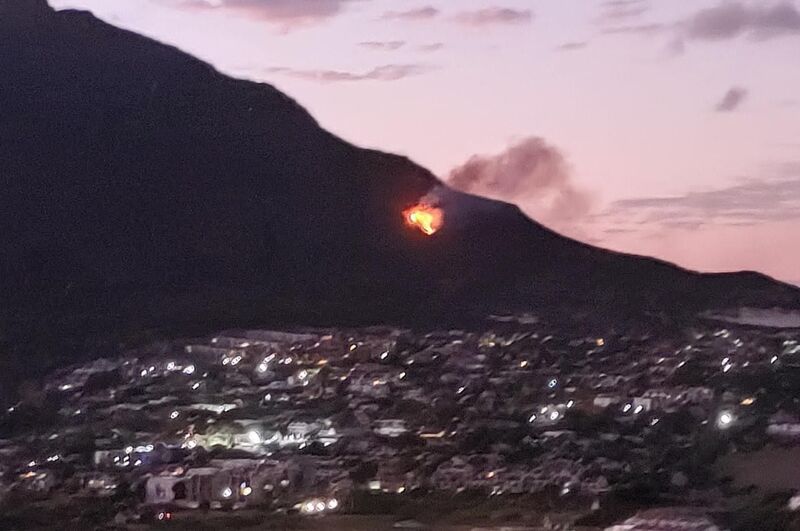- Home
- Magazines
-
Newsletters
- 19 July 2024
- 12 July 2024
- 5 July 2024
- 28 June 2024
- 14 June 2024
- 7 June 2024
- 31 May 2024
- 24 May 2024
- 17 May 2024
- 10 May 2024
- 3 May 2024
- 26 April 2024
- 19 April 2024
- 12 April 2024
- 22 March 2024
- 15 March 2024
- 8 March 2024
- 1 March 2024
- 23 February 2024
- 16 February 2024
- 9 February 2024
- 26 January 2024
- 19 January 2024
- 12 January 2024
- 22 December 2023
- 1 December 2023
- 24 November 2023
- 10 November 2023
- 3 November 2023
- 27 October 2023
- 20 October 2023
- 13 October 2023
- 6 October 2023
- 29 September 2023
- 22 September 2023
- 15 September 2023
- 8 September 2023
- 25 August 2023
- 18 August 2023
- 11 August 2023
- 4 August 2023
- 28 July 2023
- 21 July 2023
- 14 July 2023
- 7 July 2023
- 30 June 2023
- 23 June 2023
- 15 June 2023
- 2 June 2023
- 26 May 2023
- 19 May 2023
- 12 May 2023
- 5 May 2023
- 28 April 2023
- 21 April 2023
- 14 April 2023
- 6 April 2023
- 31 March 2023
- 24 March 2023
- 17 March 2023
- 10 March 2023
- 3 March 2023
- 24 February 2023
- 17 February 2023
- 10 February 2023
- 3 February 2023
- 27 January 2023
- 13 January 2023
- 22 December 2022
- 15 December 2022
- 9 December 2022
- 2 December 2022
- 25 November 2022
- 18 November 2022
- 11 November 2022
- 4 November 2022
- Advertising
- Subscribe
- Articles
-
Galleries
- AOSH Firexpo 2024
- Midvaal Fit to Fight Fire 2024
- WoF KNP 2023 Gallery
- TFA 2023 Gallery
- DMISA Conference 2023
- ETS 2023 Gallery
- Drager Fire Combat and Rescue Challenge 2023
- AOSH Firexpo 2023
- Midvaal Fit to Fight Fire
- WC IFFD 2023
- NMU 13th Fire Management Symposium 2022
- JOIFF Africa Conference 2022
- ETS 2022 Gallery
- TFA 2022 Gallery
- IFFD 2018
- SAESI
- TFA
- WRC 2018
- WRC 2019
- A-OSH/Securex
- IFE AGM 2019
- ETS Ind Fire Comp Nov 2019
- ETS Challenge 2021
- Drager launch
- Drager Fire Combat and Rescue Challenge 2022
- TFA
- Contact
- Home
- Magazines
-
Newsletters
- 19 July 2024
- 12 July 2024
- 5 July 2024
- 28 June 2024
- 14 June 2024
- 7 June 2024
- 31 May 2024
- 24 May 2024
- 17 May 2024
- 10 May 2024
- 3 May 2024
- 26 April 2024
- 19 April 2024
- 12 April 2024
- 22 March 2024
- 15 March 2024
- 8 March 2024
- 1 March 2024
- 23 February 2024
- 16 February 2024
- 9 February 2024
- 26 January 2024
- 19 January 2024
- 12 January 2024
- 22 December 2023
- 1 December 2023
- 24 November 2023
- 10 November 2023
- 3 November 2023
- 27 October 2023
- 20 October 2023
- 13 October 2023
- 6 October 2023
- 29 September 2023
- 22 September 2023
- 15 September 2023
- 8 September 2023
- 25 August 2023
- 18 August 2023
- 11 August 2023
- 4 August 2023
- 28 July 2023
- 21 July 2023
- 14 July 2023
- 7 July 2023
- 30 June 2023
- 23 June 2023
- 15 June 2023
- 2 June 2023
- 26 May 2023
- 19 May 2023
- 12 May 2023
- 5 May 2023
- 28 April 2023
- 21 April 2023
- 14 April 2023
- 6 April 2023
- 31 March 2023
- 24 March 2023
- 17 March 2023
- 10 March 2023
- 3 March 2023
- 24 February 2023
- 17 February 2023
- 10 February 2023
- 3 February 2023
- 27 January 2023
- 13 January 2023
- 22 December 2022
- 15 December 2022
- 9 December 2022
- 2 December 2022
- 25 November 2022
- 18 November 2022
- 11 November 2022
- 4 November 2022
- Advertising
- Subscribe
- Articles
-
Galleries
- AOSH Firexpo 2024
- Midvaal Fit to Fight Fire 2024
- WoF KNP 2023 Gallery
- TFA 2023 Gallery
- DMISA Conference 2023
- ETS 2023 Gallery
- Drager Fire Combat and Rescue Challenge 2023
- AOSH Firexpo 2023
- Midvaal Fit to Fight Fire
- WC IFFD 2023
- NMU 13th Fire Management Symposium 2022
- JOIFF Africa Conference 2022
- ETS 2022 Gallery
- TFA 2022 Gallery
- IFFD 2018
- SAESI
- TFA
- WRC 2018
- WRC 2019
- A-OSH/Securex
- IFE AGM 2019
- ETS Ind Fire Comp Nov 2019
- ETS Challenge 2021
- Drager launch
- Drager Fire Combat and Rescue Challenge 2022
- TFA
- Contact
Follow us
Crews tackle fire at Karbonkelberg on Table Mountain, Cape Town
Fire crews tackled a fire at Karbonkelberg on Table Mountain, Cape Town, on Sunday, 4 December 2022. Clinton Dilgee of Table Mountain Nation Park (TMNP) said they received the call at 20h15 on Sunday evening. Vegetation consisted of heavy dense cleared area of rooikrans with extremely dense fynbos. The area has been cleared multiple times leading to a very dense build-up of material which made access almost impossible. A fairly constant but brisk 35km/h SE wind lead to a narrow but active fire. The incident commander was Philip Prins, the operations section chief was Clinton Dilgee and divisional commander and Air Boss was Clifford Sauls. The IMT comprised of the above mentioned with additional roles of divisional commanders being populated by superintendent Omar Mwaka and crew leader Siyabulela Ntlombe.
“Table Mountain National Park crews responded from Newlands and Kloofnek stations on receiving the call at 20h15. Standby crew from Newlands amounted to 26 crew comprising of 1one operations section chief, one fire officer (NCC), one superintendent, two crew leaders, three engine bosses and 18 senior fire fighters. From the Kloofnek Station eight crew responded comprising of a crew leader, an engine boss and six senior fire fighters. NCC crews additional: 12 person crew. Volunteer Wildfire Crews (initial attack); 20 person crews. Enviro Wildfire Services deployed a drone for initial investigation”, said Dilgee.. He added, “Vehicles attending from TMNP included one 6 000-litre 4x4 water tanker, two 1 200-litre all-terrain vehicles, one transport vehicle, two LDV 4x4s, NCC transport vehicle (additional crew), Volunteer Wildfire Services with two transit vehicles and aerial response was one Huey from TMNP.” Dilgee added, “On approach, crews were deployed with basic hand tools or beaters and rakehoes and slashers starting from the base along the right flank in an attempt to reach and pinch the head. Priority was that the right flank would open in the direction of Llandudno. The wind determined that the fire was burning at a diagonal pattern making progress slow but also dangerous as rock falls was considered imminent. On arrival of VWS crews the left flank was attended to. The head burnt/was directed into a rock face slowing the progression to a point where crews could catch up to the head and contain. There was no access to vehicles due to remoteness of fire.” “Commencement was at 20h15 so all fire operations were through the night including containment. Aerial was utilised on 5 December 2022 for approximately 1,5hrs to assist with flare-ups along the flanks. Challenges faced included the remote treacherous terrain and thick vegetation lead to access issues. No vehicular access for wet lines. The wind was fast but assisted keeping the fire line narrow”, continued Dilgee. “The area burnt was 3,5ha, a direct result due to a fast initial attack. Mostly Fynbos and alien vegetation slash burnt with no structural or any other damages encountered.” Active fire suppression was from 4 December at 20h45 to 5 December 2022 at 02h30. The incident was closed on 7 December 2022 at 17h00. Activities on 7 December 2022 was hot spots smoking. Photos: The first three photos are origin pictures and the last a thermal image. Source: Clinton Dilgee, Table Mountain National Park |
Quick navigation
Social
|
Who are we?FRI Media (Pty) Ltd is an independent publisher of technical magazines including the well-read and respected Fire and Rescue International, its weekly FRI Newsletter and the Disaster Management Journal. We also offer a complete marketing and publishing package, which include design, printing and corporate wear and gifts. |
Weekly FRI Newsletter |
© Copyright 2018 Fire and Rescue International. All Rights Reserved.









